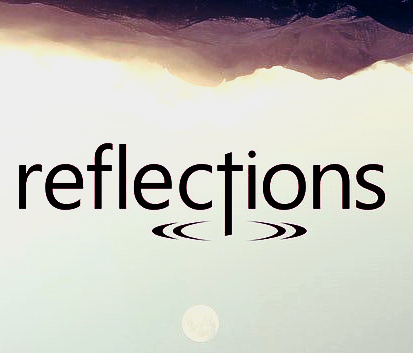Michaelmas: Fighting the bad guys.
How do we fight the bad guys?

How do we fight the bad guys?
And we do like to fight them, don’t we? We might say that we dislike violence, but that’s not totally true. So many of the films, TV series, novels, and computer games that we choose as entertainment are about war and conflict. We love the gripping endings when the hero defeats villain and justice is done.
And we long to see the same in real life, too. We want the Putin's of this world to get their comeuppance. But often the ways we go about this are counter-productive – violence has a habit of producing more violence, spinning out of control. So how should we fight the bad guys?
There’s a clue in Michaelmas, which is marked in the church calendar this week. It’s the celebration of the archangel Michael, who appears in the Bible’s book of Revelation. Revelation is an apocalyptic vision seen by Jesus’ disciple, John, when he was an old man imprisoned for his beliefs.
The narrative begins in striking style: “Then another sign appeared in heaven: an enormous red dragon with seven heads and ten horns and seven crowns on its heads” (Chapter 12 verse 1). This fearsome apparition pursues and tries to kill a woman with a new-born baby, then in its rage unleashes war and destruction on earth. It’s a depiction of how the powers of evil force themselves on the weak and vulnerable, wreaking terror and violence. Originally referring to Roman persecution of Christians, the ‘enormous red dragon’ represents every tyrant in every age.
When all seems lost, the archangel Michael suddenly blasts into John’s vision: “Then war broke out in heaven. Michael and his angels fought against the dragon, and the dragon and his angels fought back.”
This striking image has inspired artwork in churches for centuries. These always show Michael as a tough, heavily armed, dashing male soldier, who’d fit perfectly in a Hollywood movie or as a poster-boy for army-recruitment adverts. Not to disappoint us, we read that “the great dragon was hurled down.” That’s how to fight the bad guys, right? Smash them in the face.
Well, maybe not. The Bible passage continues that the people under attack triumphed over the dragon in battle, “by the blood of the Lamb and by the word of their testimony; they did not love their lives so much as to shrink from death.” John means this. Jesus defeated evil by self-giving enemy love on the cross, and his followers beat their enemies by copying him – telling the good news of that first Easter, and willingly giving their own lives rather than killing and fighting in return.
If that sounds like an insane way to fight the bad guys, maybe The Lego Movie and Lord of the Rings can help us understand it better.
In the Lego Movie, evil President Business is trying to take over the Lego universe and glue it all together so he can totally control everything and everyone. He is opposed by the Master Builders, the coolest and most creative inhabitants of the Lego world who are committed to stopping this evil plan.
However, they can’t beat the tyrant, and the hero of the story turns out to be an apparently dull character called Emmet. Despite not being creative or brave or smart, he manages to rescue the Lego world. But he doesn’t do this by blowing President Business to smithereens. Instead, he persuades him that he, too, President Business, is special, as is everyone. President Business is moved by what Emmet says, unfreezes his victims and abandons his dastardly plan.
In Lord of the Rings, the evil Lord Sauron is determined to take over the whole world by force and terror. The massed ranks of dwarf, elf, and human armies can’t stop him. But he is defeated ultimately by Frodo Baggins. This isn’t because Frodo is a better warrior or a more powerful wizard than anyone else. He’s a hobbit – a race of small, lazy, cowardly creatures. He has no obvious qualifications for job of saviour of the universe. But he finds a magic ring, the most powerful thing in the world, and to defeat Sauron he must destroy the ring and make himself weak, resisting the temptation to use it himself.
In these stories love and forgiveness and self-denial by apparently weak people defeat the forces of hell where tactical genius and physical strength fail.
The message of Michael and the dragon is the same. It tells us two important things. There is a battle between good and evil, so we shouldn’t be shocked or surprised when we encounter suffering. But God defeats evil in a surprising way. Jesus didn’t lead a big army and blast his enemies – he defeated the devil by loving his enemies and dying on the cross to forgive our sins and rising again to give us new life.
Unfortunately, the church in the past has often got this wrong, mistaking symbols and signs like Michael and the dragon for real life. When it does that it ends up blessing crusades, weapons and armies. Maybe because that’s the human thing to do – we really do seem enchanted by violence.
Michaelmas teaches us a much better message: that the sort of self-giving, humble love that Jesus showed us is much more powerful. And that’s how we should fight the bad guys.








